April 28, 2019 August 16, 2019
The Spiral Notebook
Chapter Two: Spell Upgrades
Whether you’re harvesting souls with Scarecrow or gobbling foes up with Storm Shark, there’s no denying that spells are—and always have been—a cornerstone of the Wizard101 experience. As wizards and witches grow ever more powerful, however, some of our spells get left in the dust, never to be seen again… well, I want to change that.
Welcome to the Spiral Notebook, ladies and gents. Last time we talked about one of my favorite NPCs in all of gaming—Mellori—but this time, I want to talk about something I’ve been mulling over for a while now… the concept of upgrading your spells.
Part #1: What do I Mean by “Upgrade”?
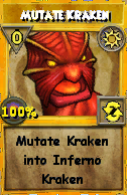 Now, when I say “spell upgrades,” I’m not talking about mutations. Mutations are Sun School spells that temporarily change the School of magic of a card, adding damage and sometimes completely altering the effects of the spell. No, that’s not what I’m talking about. Rather, I’m talking about the cards we’ve seen used time and time again by both friend and foe as “upgrades” of spells… that is, spells that do more damage, spells that have secondary effects, or spells that revolutionize the original by changing its function entirely. (And yes, they need to have a different name than the original.)
Now, when I say “spell upgrades,” I’m not talking about mutations. Mutations are Sun School spells that temporarily change the School of magic of a card, adding damage and sometimes completely altering the effects of the spell. No, that’s not what I’m talking about. Rather, I’m talking about the cards we’ve seen used time and time again by both friend and foe as “upgrades” of spells… that is, spells that do more damage, spells that have secondary effects, or spells that revolutionize the original by changing its function entirely. (And yes, they need to have a different name than the original.)
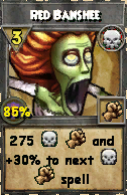
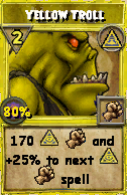
The two most prominent examples I can think of when it comes to spell upgrades are Red Banshee and Yellow Troll. These two spells are virtually identical to their regular counterparts, save for one key difference—they have a secondary effect. In both cases, said secondary effect is a trap placed on the opponent.
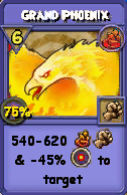
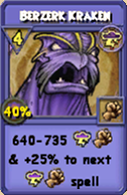 Another fine example of these “spell upgrades” are school pet spells. You know the ones: Berzerk Kraken (seriously what is up with that Accuracy), Grand Phoenix, Enraged Forest Lord… these spells are pre-existing upgrades to spells we already have. So I ask this question, then—if we are to grow as wizards, well, who’s to say our spells can’t grow with us?
Another fine example of these “spell upgrades” are school pet spells. You know the ones: Berzerk Kraken (seriously what is up with that Accuracy), Grand Phoenix, Enraged Forest Lord… these spells are pre-existing upgrades to spells we already have. So I ask this question, then—if we are to grow as wizards, well, who’s to say our spells can’t grow with us?
Part #2: Which Spells Would I Make Upgrades?
In writing this article, I sifted through nearly 30 different “upgrades” of various spells; eventually, I was able to whittle my list of feasible spell upgrades down to 15 spells which I think could (and should) be implemented into the game.
Damage/Healing Up
Vengeful Efreet, Stampeding Mammoth, Sparking Stormzilla, Royal Triton,Â
Sprite Queen, Irate Gnomes!, Virulent Basilisk, Ominous Scarecrow
The first eight spells are all just the same spell with the same pip cost* and secondary effects, just with more damage/healing. Though I WILL say Royal Triton would need to be knocked down, like, a couple hundred pegs… seriously, it should be doing 1,200-1,280 damage AFTER the Epic enchantment, not BEFORE it!
*Only exception in this group is Ominous Scarecrow, whose cost is 1 more Pip than the original.Â
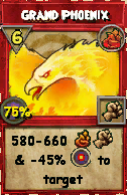
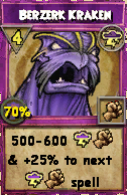
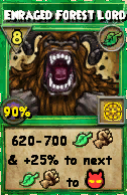


Damage Up + Add Secondary Effect
Grand Phoenix, Berzerk Kraken, Enraged Forest Lord, Yellow Troll, Red Banshee
On top of getting a damage boost (only exceptions to this being Yellow Troll and Red Banshee), these next 5 spells gain an additional effect after the initial attack, drastically increasing their viability twofold. I’ll just quickly run through why I chose each spell and added them to my list.
Part #3: How Would Spell Upgrades be Implemented?
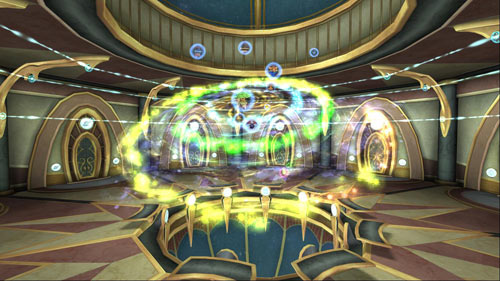 The way I see it, there can be a very simple, effective way for people to upgrade their cards, albeit not until very late in the game—the Arcanum. Think about it—after graduating Ravenwood, here you are, basically in the Spiral equivalent of university, going more in-depth about spells you already know, unlocking potential within them you never thought possible? True, this is a benefit only high-level wizards will get to have, but, to go back on a previous point… if our tale in Wizard101 is one of growth, then why not have it show in the magic we wield?
The way I see it, there can be a very simple, effective way for people to upgrade their cards, albeit not until very late in the game—the Arcanum. Think about it—after graduating Ravenwood, here you are, basically in the Spiral equivalent of university, going more in-depth about spells you already know, unlocking potential within them you never thought possible? True, this is a benefit only high-level wizards will get to have, but, to go back on a previous point… if our tale in Wizard101 is one of growth, then why not have it show in the magic we wield?
How the spells will implement themselves practically is another story entirely. Technically speaking, we already have “upgraded” spells in the game—Helping/Availing Hands and Link/Power Link are the best examples I can think of—but I think we should take this a step further and apply it to spells in a way that hasn’t been done before—instead of simply adding a new spell to your deck, the new spell would upgrade the pre-existing one and take its place. Of course, there are a couple exceptions to this… spells I like to call the variants.
Part #4: The Variants
![]()
Eagle-eyed readers might’ve noticed that out of the 15 spells I supposedly chose, I’ve only mentioned 13 so far. Well, that’s because these last 2 are… special cases. The spells to which I refer: Sprite Swarm and Lord Humungofrog.
If you ask me, both spells deserve to be their own, trainable spell. On top of Sprite already having an upgrade in Sprite Queen, Sprite Swarm can easily stand on its own as an individual spell; it would prove an interesting counterpart to Unicorn, healing the team over time instead of just all at once.

Lord Humongofrog will help Myth deal with multiple enemies much, much quicker. Excluding Mystic Colossus, Myth’s highest-damaging AoE is Humungofrog; without having to rely on Shadow Pip RNG, Myth will be able to be a far more consistent hitter in terms of PvE, rightfully taking its place as the third most powerful damage school in the game. All that being said, however, regular Humungofrog is still a vital tool for Myth, so I think that Lord Humungofrog and regular Humungofrog should stay separate. Just make sure to keep Lord Humungfrog’s base damage WAY lower—perhaps 150 lower, so that when enchanted with Epic it will do 1020-1080 damage?
Part #5: Conclusion
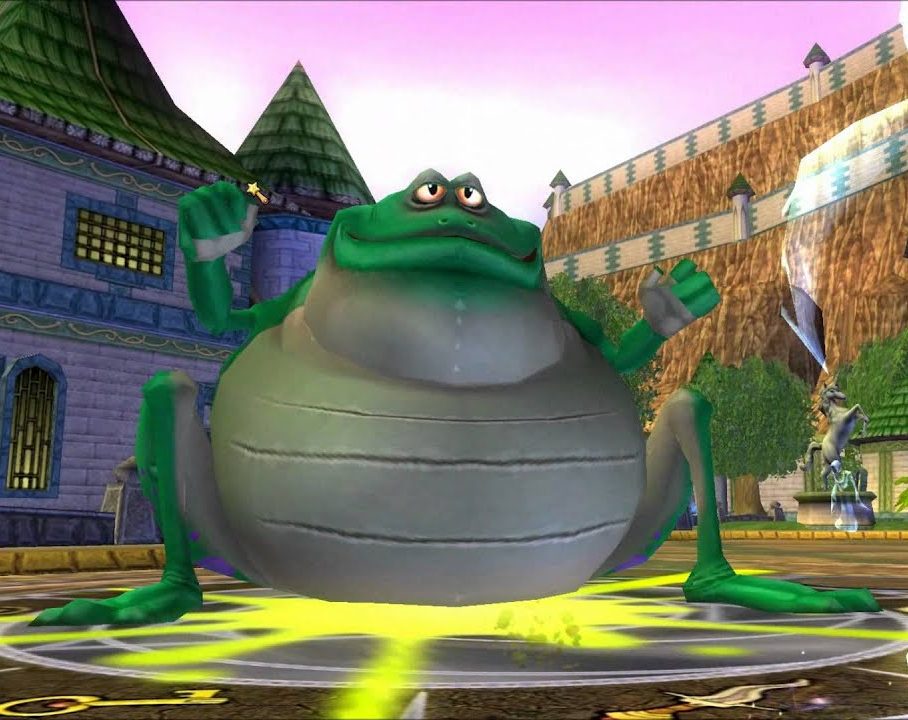
Upgrading cards will strengthen pre-existing spells, providing more utility for players as well as granting a sense of accomplishment overall. We as wizards have limitless capability to grow in our magical prowess, and in that growth we should be able to revisit some of our old abilities and improve upon them. Implementing a system where you can upgrade your cards, I believe, will not only make spells feel less static and unchanging but also open up a whole new realm of possibilities for the Spiral as a whole.
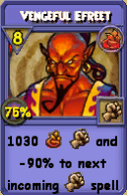
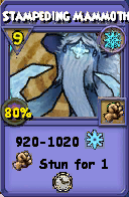
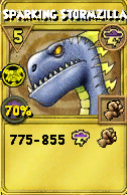
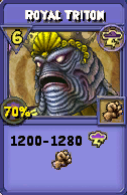
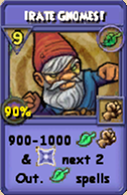
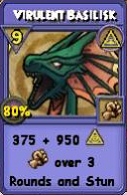
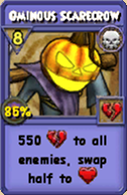

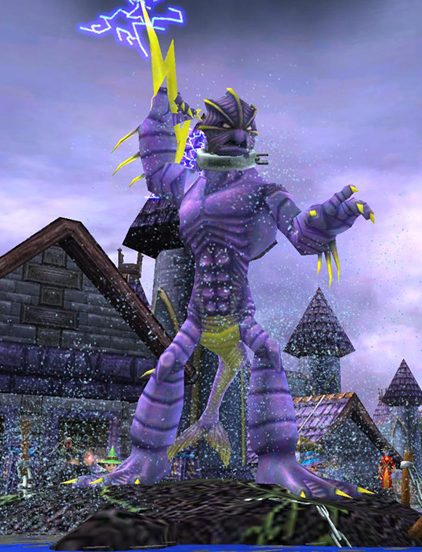 Like Grand Phoenix, I’m using the Creature-Only version of Berzerk Kraken here because A) The damage is a bit toned-down, and B) THEY FIXED THE ACCURACY. (Also, why is “berserk” spelled that way? Maybe Kingsisle though the “z” would make it hip with the kids or something.)
Like Grand Phoenix, I’m using the Creature-Only version of Berzerk Kraken here because A) The damage is a bit toned-down, and B) THEY FIXED THE ACCURACY. (Also, why is “berserk” spelled that way? Maybe Kingsisle though the “z” would make it hip with the kids or something.)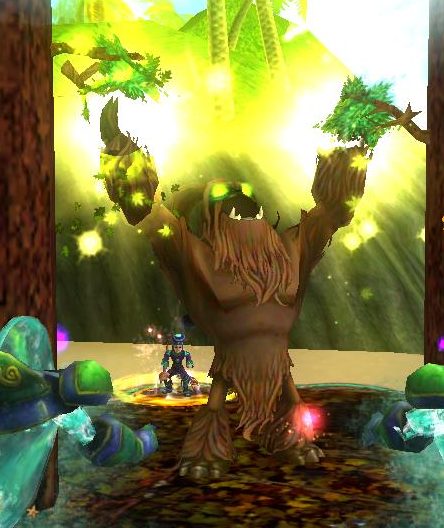
 Yellow Troll and Red Banshee, while generally outclassed for PvP by White Rat Magician and Red Ghost respectively, are great ways to get rid of debuffs while simultaneously applying a buff for yourself. Their low pip cost makes them great combo tools; having these spells available to wizards without needing a specific pet or hoarding a specific treasure card could make both schools a bit more accessible PvP-wise.
Yellow Troll and Red Banshee, while generally outclassed for PvP by White Rat Magician and Red Ghost respectively, are great ways to get rid of debuffs while simultaneously applying a buff for yourself. Their low pip cost makes them great combo tools; having these spells available to wizards without needing a specific pet or hoarding a specific treasure card could make both schools a bit more accessible PvP-wise.